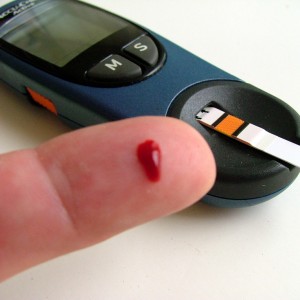Two Main Types of Contact Lenses:
Contact lenses are tiny discs of plastic placed on the surface of the eye, as a substitute for wearing glasses. Contact lenses are made of different types of plastics, but they fall into two main categories:
- Soft contact lenses are gel-like and conform to the shape of your eye. They are very comfortable and are hardly noticeable once the lenses are placed on the eye. The replacement schedule ranges from daily to monthly disposable, and some are designed for extended wear overnight.
- Gas permeable (GP) contact lenses are more rigid and smaller in diameter. Compared to soft lenses, GP lenses are more durable, allow more oxygen to enter your eyes, and can correct certain vision problems. However, they may be less comfortable initially and take a longer time to get used to.
Advantages of Contact Lenses:
- They move with your eye, allowing a natural field of vision.
- There are no frames or reflections to block your view.
- They don’t fog up.
- They do not get in the way of your activities.
- You can wear sunglasses over them.
Posted in General Health, Health Topics by CCHRC | Tags: Contact Lenses, dry eyes, eye, Gas permeable (GP) contact lenses, glasses, hydrogen peroxide solution, Soft contact lenses
What Is Acne?
Acne is also known as pimples, blemishes, and zits. It is a skin condition that typically appears on the face, neck, chest, back, and shoulders, which are areas of your skin that have a large number of oil glands. Formation of acne is caused by the buildup of oil, dead skin cells, and bacteria in the hair follicles (skin pores). On a daily basis, your skin sheds dead cells and produces oil, and the rate at which this happens is affected by hormones. Acne occurs when these natural processes are off-balance.
Who Gets Acne?
Anyone! Over 90% of teenagers develop acne, and it is estimated that about 25% adults between the ages of 25-45 experience acne as well. As mentioned before, acne formation is related to hormonal levels, which fluctuate throughout your life. Acne caused by hormonal imbalance is especially common among:
- Teenagers, both boys and girls.
- Women and girls, 2-7 days before their periods.
- Pregnant women.
- People using certain medications that affect hormonal levels.
Treatment for Acne:
A variety of over-the-counter skin care products are available to treat acne. Most of them include salicylic acid or benzoyl peroxide as their active ingredient. They help to reduce oil production, speed up skin ce
 What is stress?
What is stress?
Stress is a feeling that we have in response to particular demands. Events that create stress cover a wide range of situations: they can be everything from taking a test, adjusting to a new environment, to facing a physical danger.
What are the common sources of stress?
- Academic pressure
- Pressure to fit in with peer groups
- Adaptation to body changes
- Transition to higher educational levels
- Over-scheduling of extracurricular activities
- Expectations from parents
- Family and peer conflicts
- Relationship problems
- Career decisions
- Financial concerns
What are the signs of being “stressed-out”?
- Increased physical illness, due to suppression of the immune system
- Mood swings: increased anger and irritability
- Constant feelings of worry, nervousness, and hopelessness
- Problems with sleeping and eating
- Difficulty concentrating
- Withdrawal from social activities
Can stress have positive
 PREVENTING SUICIDE
PREVENTING SUICIDE
Suicide CAN be prevented and help IS available. Suicide affects both the person thinking about suicide and his or her friends and family. By recognizing the risk factors, warning signs for suicide, and knowing what to do if you or someone you know is thinking about suicide, the devastating effects of suicide can be reduced. The most important thing to remember is to GET HELP!
Facts about suicide
- Suicide is the 3rd leading cause of death for 15- to 24-year-olds
- 1 in 25 suicide attempts succeed
- Girls think about and attempt suicide about twice as often as boys, but boys are more likely than girls to die from suicide
A person is more at risk for committing suicide if he/she has these risk factors:
- Mental disorders such as depression, bipolar disorder
- Alcohol and drug use
- Feelings of hopelessness
- Inclination to act on impulse
- Having tried to commit suicide before
- A family history of suicide
- Having lost a loved one
What are eating disorders?
Distorted body image and obsession with the “ideal” figure can lead to unhealthy behaviors such as eating disorders. Millions of people in the United States are affected by serious and sometimes life-threatening eating disorders, and the vast majority of those affected are adolescent and young adult women. The two most common types of eating disorders are anorexia nervosa and bulimia nervosa. Anorexia nervosa is the deliberate and prolonged fasting (starvation) driven by a fear of gaining weight. Sufferers are usually extremely thin but believe they are overweight. Bulimia nervosa is characterized by a destructive pattern of overeating followed by behaviors such as purging (throwing up), fasting, or excessive exercise.
What are the medical consequences?
Anorexia nervosa can lead to muscle weakness, anemia, hair loss, osteoporosis, low blood pressure, and drop in internal body temperature. For girls and women, anorexia can cause absence of menstruation, a condition known as amenorrhea. Studies have pointed out that people with anorexia are up to ten times more likely to die as a result of their illness. The most common complications that lead to death are heart attack and electrolyte and fluid imbalances. For people with Bulimia, the binging (uncontrolled eating) and purging cycle usually r
 What is depression?
What is depression?
Depression is a psychological condition that affects your feelings, behaviors, and thoughts. Although most of us feel sad one time or another, a clinically diagnosed depression is a mood disorder marked by persistent sadness, discouragement, and loss of interest in usual activities.
Who is likely to develop depression?
Depression affects men and women of all ages, and ethnic and racial backgrounds. Although the most common time of onset is between the ages of 30 and 40, teenagers can also experience depression.
What are the symptoms of depression?
- Persistent sadness
- Irritable mood
- Feeling of worthlessness
- Loss of interest in activities you usually enjoy
- Difficulty sleeping or oversleeping
- Changes in appetite: increase or decrease
- Loss of energy
- Difficulty concentrating
- Thoughts of death or suicide
What are the causes of depression?
- Social environment: Conflicts with peer groups, breakup of a relationship
- Family environmen
 What is lung cancer?
What is lung cancer?
Lung cancer is the disease when cells in one or both of the lungs undergo abnormal changes and grow out of control. These abnormal cells cannot perform their regular function and reduce the lung’s ability to deliver oxygen to the blood. Tumors may also form as a result of the abnormal growth. In addition, similar to other cancers, lung cancer can spread to other parts of the body as the disease processes. According to 2008 statistics by the American Cancer Society, lung cancer is the second most prevalent cancer type in men and women (after prostate cancer and breast cancer, respectively), and it is the number one killer among all the cancer types.
What causes lung cancer?
Cigarette smoking is found to be responsible for the majority of lung cancer cases. Similar to other cancer types, lung cancer takes time to develop. Therefore, although lung cancer is often diagnosed among older people, the cause of the disease usually originates from a much younger age. For this reason, young people who smoke may not immediately
What is liver cancer?
Liver cancer is the disease when cells in the liver become abnormal and grow out of control. A tumor or tumors may form as a result of abnormal cell growth. The disease can also lead to liver failure, the complete loss of liver function. Similar to the other cancer types, liver cancer can spread to and affect other organs in the body.
What causes liver cancer?
Liver cancer affects people of all ages and ethnic groups, but there are several factors that increase an individual’s risk of developing this disease:
- Cirrhosis: Cirrhosis means scarring of the liver. Whenever the liver tries to heal itself from a disease or injury, scar tissue may form as a result and reduce the liver’s ability to perform its function. Cirrhosis is irreversible, and it is linked to the majority of liver cancer cases.
- Hepatitis B or C: These are chronic infections of the liver and often lead to cirrhosis and loss of liver function. Over many years, these infections can cause liver cancer.
- Family history of liver cancer
- Other risk factors such as smoking, alcohol abuse, diabetes, obesity, and exposure to harmful chemicals.
Symptoms
Liver cancer usually does not show symptoms until the later stages, and this makes early detecti
 What Is Diabetes?
What Is Diabetes?
Diabetes is the condition when your blood glucose—also called blood sugar—is too high. Glucose is a form of sugar that your body uses for fuel. When you eat, most of the food is turned into glucose, which then enters the bloodstream and circulates around your body. An organ near the stomach called the pancreas produces insulin, which helps glucose get from your blood into your cells. Cells take up the glucose and turn it into energy. When you have diabetes, your body does not make enough insulin or the insulin produced does not function properly. As a result, glucose cannot get into the cells and begins to accumulate in the bloodstream.
Why is it Important for Teens to Know About Diabetes?
According to data published in 2006, over 150,000 young people under age 20 in the United States have diabetes. Among this group, about 80% are aged 10-19 years. As obesity rates in children continue to soar, diabetes is becoming more common in teens. Without proper treatment, diabetes puts a
 Overview
Overview
The term “cancer” describes a group of diseases in which cells in a part of the body grow out of control. Cancer can originate from anywhere in the body and can spread to other parts of the body. Some cancers form a solid tumor but others, like cancer of the blood, do not. Cancer affects people of all ages, including children and youth. Although cancer among children and teens is rare, cancer remains the leading cause of death from disease in children under 15. Most cancers that occur in children are caused by changes in the genetic component within the body cell during early childhood. You cannot “catch” cancer nor give it to someone else. Unlike many other diseases, there is no known way to prevent childhood cancer.
Leading Cancer Types in Children and Youth
- Leukemia – Leukemia is the most common cancer type for this age group. It describes a group of cancers of the blood or bone marrow, caused by abnormal production of blood cells.
- Brain and nervou


